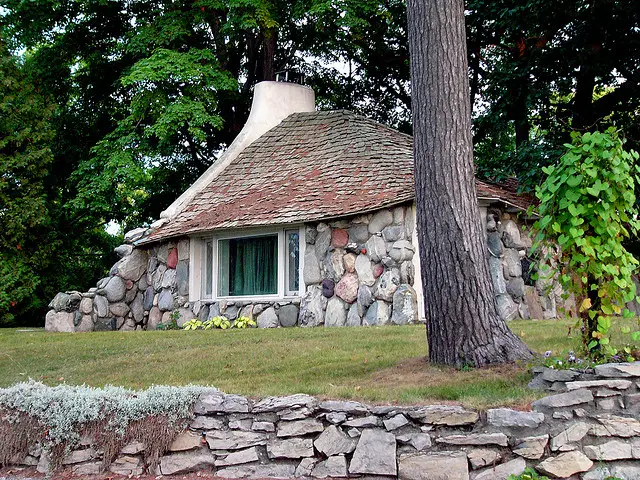 Last month, interest rates reached the psychological 8% barrier for the first time in more than a decade, and there is speculation that they will continue to rise. But do homeowners know the math behind the mortgage? After all, buying a home is a big decision! In fact, it’s usually the single biggest purchase most people make during their lifetime.
Last month, interest rates reached the psychological 8% barrier for the first time in more than a decade, and there is speculation that they will continue to rise. But do homeowners know the math behind the mortgage? After all, buying a home is a big decision! In fact, it’s usually the single biggest purchase most people make during their lifetime.
However, if you’re not careful, you could end up paying tens of thousands of dollars in additional interest alone, which is why nobody wants to make a mistake when they’re house shopping. After all, everyone should hate paying interest.
A recent survey by Chase found that only 25% of homebuyers can correctly answer basic homebuying questions regarding annual percentage rates, down payments and lenders. Of course, a well-prepared buyer should fully understand how much he or she can afford before shopping for a mortgage, shop around for reputable but low-cost lenders, review credit scores and financials before applying for the loan and have a paper trail for all funds.
Needless to say, there are other resources out there designed to help homebuyers maximize their savings too. For example, there are many resources available on the Internet to help homebuyers understand the importance of understanding the math behind the mortgage, especially when it comes to minimizing home loan costs that impact consumers’ bottom line. For example, mortgage rate calculators are extremely helpful.
It may be surprising to learn that interest rates are still at historically average levels. So there are real, tangible savings available to homebuyers. And the proof, as they say, is in the pudding. These days, the difference between locking in a 30-year mortgage at even 7% rather than 8% can save $100,000! Then again, one doesn’t have to wait 30 years to realize those savings. After just one year, you can bet that homebuyers will save more than enough cash for a top-of-the-line laptop computer.
Most people know that interest rates play a key role in the overall cost of buying a home. However, many homebuyers forget to factor in other costs. For example, one must consider property taxes, insurance, homeowners association fees, closing costs, furniture, window coverings and home renovations.
Remember, finding the best loan for your home requires that you take the time to shop around for the best rates. But it’s also just as important to understand the math behind the mortgage. And while shopping for a home loan yourself gives you the freedom to search for the best mortgage with the lowest rates and to accept that loan, it’s also true that the homebuying process can feel overwhelming. Thankfully, there are plenty of handy tools designed to help homebuyers gather all of the information they need.
So what are you waiting for? Take a few minutes and start looking for more information. It’s a move that will help to make you a more informed homebuyer.
Photo Credit: Kathleen Tyler Conklin

Thanks for that Chase! I learned so much about the math behind the mortgage. I wish I had known this earlier because we just had our new house last 2 years ago and now paying for it with 4.5% interest. I believe this interest rate is fair enough.
If people think today’s interest rates are high, talk to someone in their 60’s. 7% is acceptable by comparison. My question is the availabilty of 30 year fixed for buyers. A quick Google snip:
30 years ago: A student-led pro-democracy demonstration in China’s Tiananmen Square was violently crushed in June, while hundreds of thousands of anti-Communist protesters in Czechoslovakia were able to bring about a nonviolent “Velvet Revolution.” It was also the year of the Loma Prieta earthquake in Northern California, the inauguration of President George H. W. Bush, the Exxon Valdez oil spill in Alaska, the fall of the Berlin Wall, and much more.
And: 30 years ago….
The 30-year fixed-rate mortgage — now the most popular type of home loan — started off the decade at about 7.3 percent in 1971, according to Freddie Mac’s survey. By the end of 1979, the 30-year rate was at 12.9 percent. During this era, the Federal Reserve’s expansionary policy and other factors helped drive inflation and borrowing costs way up.
1980s mortgage rate trends
At the beginning of 1980, homes in the U.S. cost a median $63,700, according to the Commerce Department. By 1990, that median had risen to $123,900. Spurred by the Great Inflation, the 30-year fixed mortgage rate reached a pinnacle of 18.4 percent in October 1981, according to Freddie Mac. Once the Fed reined in inflation, the 30-year rate seesawed down to the 9 percent range, closing the decade at 9.78 percent.
My point being is that world events are so volatile and universal, mortgage interest rate terms should be renewable over a much shorter time frame to better reflect reality, and to also allow housing prices to deflate. Remember, higher interest rates means lower housing prices. And mortgage companies that are financially stable do not need bailouts from taxpayers. I am referring to the Savings and Loan debacle and 2008 of course.
Govt is buying votes with taxpayer dollars and paying for it all with inflation. Rinse and repeat. Free Market Capitalism?
You might follow up with a like kind article about refinancing. Lots of fees and such. I always wondered why lenders were so eager to drop an high interest loan for a lower interest loan. You’d think they would lose money. But there is more to the story….
Yep … fees galore. Don’t forget they also often sell the loan to another buyer.